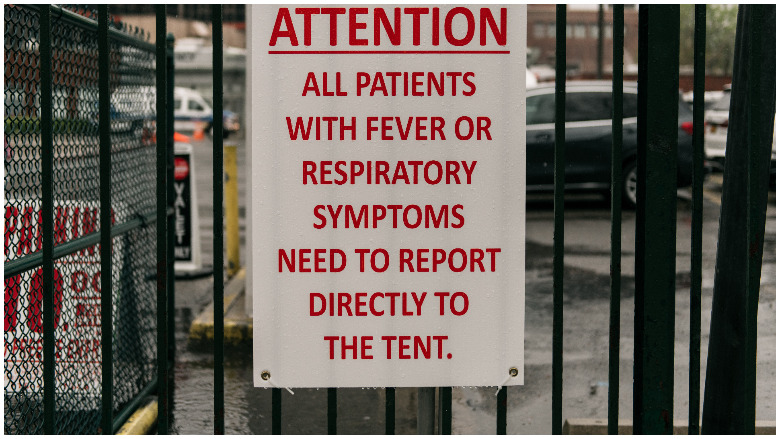
Getty COVID-19 symptoms can vary day by day.
If you have COVID-19 or just think you might have COVID-19, you will probably want to know what to expect. On a day-by-day basis, how does this infection unfold exactly?
We’ve compiled a day-by-day listing below that charts the progression of coronavirus symptoms. Although symptoms can vary widely by person, and researchers are just beginning to understand the virus, a growing body of research does lay out how the virus can unfold. Of course, you should contact your primary care doctor or a coronavirus hotline if you’re worried you have COVID-19.
Here’s what’s known about the day-to-day progression of coronavirus symptoms:
Days 4-6 After Exposure: Symptom Onset
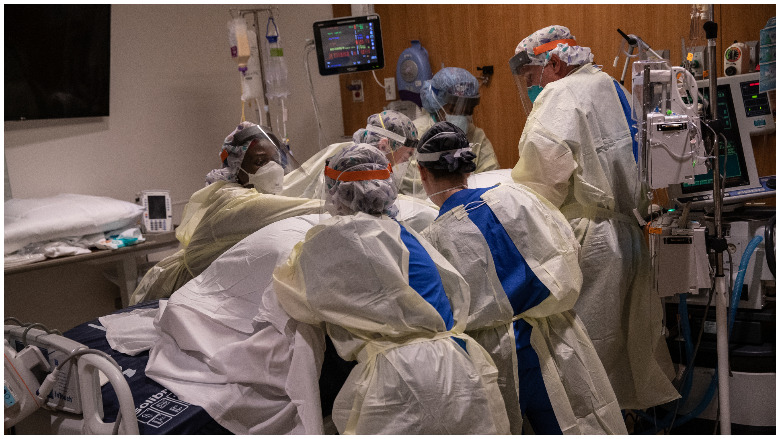
Getty Medical professionals working on a coronavirus patient.
Research studies have found the virus has an incubation period of up to 14 days. Although COVID-19 symptoms can show up as early as one day or as late as 14 days after exposure, the average incubation is five to six days, according to the World Health Organization.
That’s the point at which those who will develop symptoms generally do so (some people remain asymptomatic.)
The WHO reports that people with COVID-19 “generally develop signs and symptoms, including mild respiratory symptoms and fever, on an average of 5-6 days after infection (mean incubation period 5-6 days, range 1-14 days).” However, one study that investigated patients in Wuhan, China, found that “the median incubation period was 4 days.”
What happens once symptoms develop?
Day 1 to Day 7 After Symptom Onset
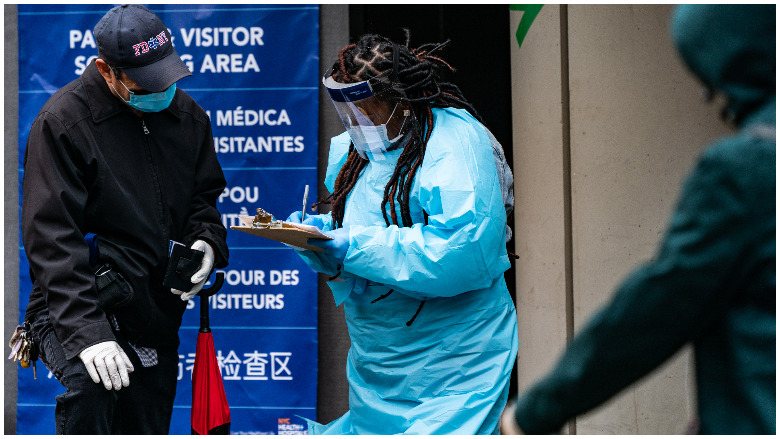
GettyYes, headache can be an early symptom of COVID-19.
According to NBC News, the first days after symptom onset often present as “minor physical complaints — slight cough, headache, low-grade fever.”
Brigham and Women’s Hospital reports that symptom presentation “can be extremely varied; most common is a non-specific flu-like illness.”
Some studies have found that symptoms start to worsen around day 5 for some patients.
Symptoms can vary, but the Centers for Disease Control and Prevention lists these common signs of COVID-19:
- Fever
- Cough
- Shortness of breath or difficulty breathing
- Chills
- Repeated shaking with chills
- Muscle pain
- Headache
- Sore throat
- New loss of taste or smell
In addition, some studies have found gastrointestinal distress in COVID-19 patients. “Most people have mild illness and are able to recover at home without medical care. They may not need to be tested. There is no treatment specifically approved for people who have COVID-19,” the CDC says.
The WHO lists these symptoms:
Symptoms of COVID-19 are non-specific and the disease presentation can range from no symptoms (asymptomatic) to severe pneumonia and death. … Based on 55924 laboratory confirmed cases, typical signs and symptoms include: fever (87.9%), dry cough (67.7%), fatigue (38.1%), sputum production (33.4%), shortness of breath (18.6%), sore throat (13.9%), headache (13.6%), myalgia or arthralgia (14.8%), chills (11.4%), nausea or vomiting (5.0%), nasal congestion (4.8%), diarrhea (3.7%), and hemoptysis (0.9%), and conjunctival congestion (0.8%).
Elizabeth Schneider and some of her friends tested positive for COVID-19, and she has described on Facebook how the symptoms progressed, writing that the symptoms started with a “headache, fever (for first 3 days consistently and then on and off after 3 days), severe body aches and joint pain, and severe fatigue. I had a fever that spiked the first night to 103 degrees and eventually came down to 100 and then low grade 99.5.”
Some of her friends had other symptoms, though. “Some folks had diarrhea. I felt nauseous one day. Once the fever is gone some were left with nasal congestion, sore throat. Only a very few of us had a mild itchy cough. Very few had chest tightness or other respiratory symptoms,” she wrote, adding that the illness lasted from 10-16 days.
Day 7
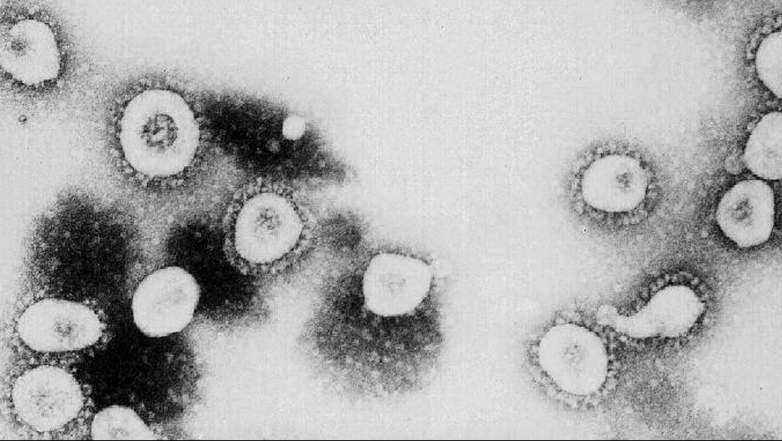
GettyThis photo from the CDC shows a microscopic view of the coronavirus.
Roughly around day 7, experts say, people often know whether they will start to get better or take a turn for the worse and end up hospitalized. That’s because COVID-19 is often a “slow burn,” according to NBC News, with the infection starting out mild and then suddenly worsening — or dissipating.
“Patients tend to have symptoms for about a week before either getting better, or getting really sick,” Dr. Joshua Denson told NBC News.
Chris Gough was one of the lucky ones. He recovered from COVID-19 in about 10 days, he wrote on Twitter. “D10: Finally back to normal today. Appetite has been the last to recover, but is pretty much there today,” he wrote. You can read how his symptoms progressed day-by-day here.
According to the WHO, about 80% of people end up with “mild disease” and recover. The term “mild” in this context can include pneumonia in some cases, so it doesn’t just mean the sniffles. About 13.8% of people have severe disease, which includes shortness of breath, and 6.1% of patients are critical, suffering things like respiratory failure and septic shock, according to WHO.
Days 12-19
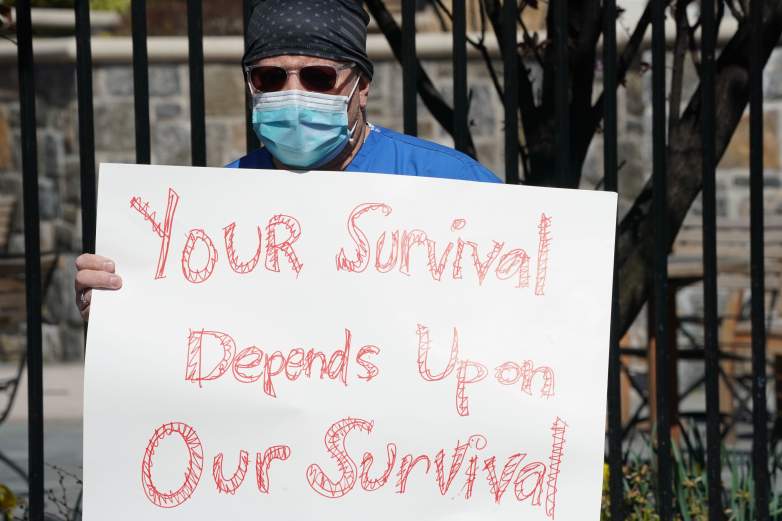
GettyMontefiore Medical Center nurses call for N95 masks and other critical PPE to handle the coronavirus (COVID-19) on April 1, 2020, in New York. The nurses claim “hospital management is asking nurses to reuse disposable N95s after long shifts” in the Bronx.
Twelve days is the median time from symptom onset to patients ending up in the ICU.
The research study “Clinical course and risk factors for mortality of adult inpatients with COVID-19 in Wuhan, China: a retrospective cohort study” found that shortness of breath lasted a median of 13 days, fever 12 and cough 19 days in survivors.
The Brigham and Women’s Hospital found that 45% of survivors still had a cough upon discharge from the hospital.
After Day 14 for Those Hospitalized: 14.5 Days From Onset to Mechanical Ventilation, 18.5 Days From Onset to Death & 22 Days From Onset to Discharge in Some Studies
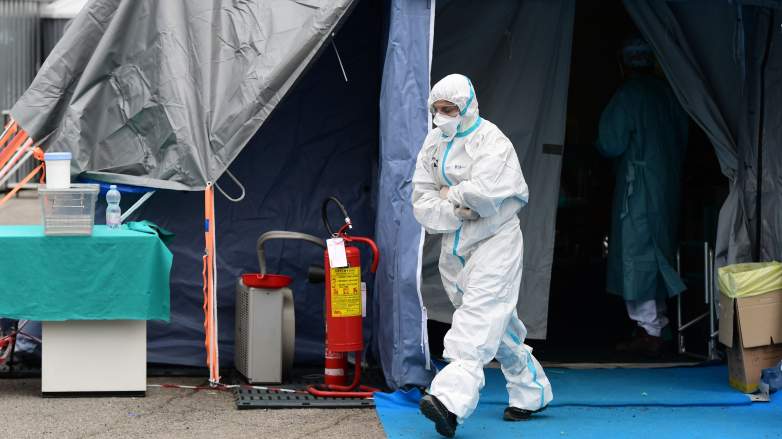
GettyA hospital worker leaves a tent set up for patient triage in Lombardy, Italy.
For those who ended up in the hospital, “the most common symptoms on admission were fever and cough, followed by sputum production and fatigue,” according to the research study “Clinical course and risk factors for mortality of adult inpatients with COVID-19 in Wuhan, China: a retrospective cohort study.”
This study found that “the median time from illness onset (ie, before admission) to discharge was 22 days … whereas the median time to death was 18.5 days. … The median time from illness onset to invasive mechanical ventilation was 14.5 days.”
According to a study in the New England Journal of Medicine, “the median duration of hospitalization” was 12 days after admittance, with most hospitalized patients being diagnosed with pneumonia.
Brigham and Women’s Hospital found that the “duration between symptom onset and ventilation ranges from 3-12.5 days, median 10 days.” The site listed this progression for other more serious symptoms, noting, “Anecdotally, respiratory status can decompensate very rapidly”:
- Sepsis, median 9 days (range 7-13 days)
- ARDS, median 12 days (range 8-15 days)
- Acute cardiac injury, median 15 days (range 10-17 days)
- AKI, median 15 days (range 13-19.5 days)
- Secondary infection, median 17 days (range 13-19 days)
That site also says that “illness severity has been noted to have two peaks at ~14 days and ~22 days.”
Some patients who ended up in the hospital in one study were on a ventilator for four to 22 days, showing that the virus can persist for weeks. That study reported that some patients died 9 to 11 days after admittance to the hospital.
Days 8 -37: When the Virus Can No Longer Be Detected
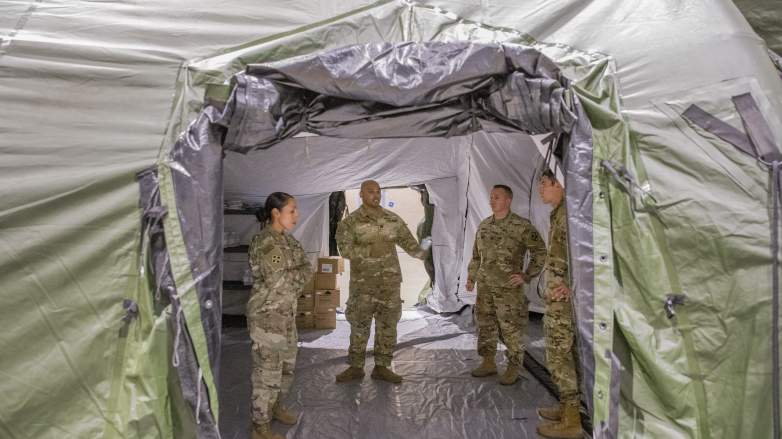
GettyAn operating room set up at CenturyLink Field.
If you recover from the virus, how long does it take before it can no longer be detected? The clinical course and risk factors study found that the median duration of “viral shedding” in survivors was 20 days from illness onset, with a range of eight to 37 days.
The virus was still detectable in the bodies of those who died.
READ NEXT: The Real Story of Waco.